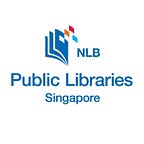On Botanical Inkmaking with library@orchard’s Resident, Wild Dot
Not all pigments are created equal. Wild Dot, library@orchard’s latest artist-in-residence, is a botanical inkmaking studio—one with a practice of extracting natural inks and pigments from plants found in Singapore and turning them into paints and artworks. With an aim to promote an appreciation of the gifts offered by nature, Wild Dot’s practice is deeply rooted in keen observation and mindfulness, which it believes renews one’s kinship with the earth.
Since working out of the library in April 2022, Wild Dot will conclude their residency this month. We speak with co-founders Liz Liu and Shirin Rafie to find out more about botanical inkmaking and their plans for the future.
Hi Shirin and Liz, how is your residency at library@orchard going?
The library has been a very chill and conducive space for us to work — it’s a library after all! We’re also enjoying the variety of design books available to us. We’ve always known that library@orchard had a strong focus on design, and we’d drop by from time to time to browse the books here whenever we needed some inspiration for our artworks. The residency has made it easier to access design books. Besides that, the library has also been a fun meeting point for us to say hi to curious friends and (ex-)strangers!
What have you been working on during your residency?
We’re actually in the midst of creating a series of small artworks that’ll feature the colour palette of native edible plants.
Do you have any favourite plants and/or flowers you like working with, and why?
We really enjoy working with plants that produce unexpected shades — and this can happen even with commonly found plants. A few months ago, we chanced upon some fallen, unripe fruit pods from a Golden Shower tree (Cassia fistula). When we opened the pods, the pulp inside was bright yellow. We soaked it in an alkaline medium for a few weeks and the solution turned bright orange-yellow. But when we applied the ink to paper, the orange gradually shifted to a dark purple as it dried! That was a fascinating process to observe.
We really love how time can be a factor in how plant colours shift in shades and tones. It’s a reminder that nothing is permanent, and we should enjoy the small moments along the way.
Are there colours that are particularly difficult to extract naturally?
Blue is considered a rare colour in nature, but we are lucky to have the blue pea (Clitoria ternatea) growing along roads in Singapore. We’ve also been working for some time to find a purer red among our native trees. Fingers crossed!
Why did you choose to work mainly with flora and fauna native to Singapore?
Not many people know about plants that we have here but, really, almost everything we use — fibres, medicine, fruits, gums, wood — can be traced back to a plant. And we want to bring attention to that.
While our current residency focuses on native edible plants, our work in general explores the possibilities of all the plants around us, whether they are native, cultivated, or even invasive. To us, plants don’t have passport classifications, haha!
Any interesting stories to share about your residency so far? Tell us about some of the people you’ve met!
We’re lucky to meet so many like-minded people who are working with plants in their own way, such as our collaborators from SG Seed Exchange, who are very knowledgeable about local plants. We also met writers, designers and educators who shared with us how they’ve incorporated nature into their works.
What’s next for Wild Dot?
We want to keep experimenting with inkmaking, have fun, and get better at our craft. Shirin’s new obsession is with papermaking and Liz’s is with lichens. Hopefully, with borders opening up, we can travel and learn from our Southeast Asian neighbours about the plants they work with.
Catch Wild Dot at their final Open Studio session on 21 May (Sat), 1 pm to 4 pm. Also keep an eye out for their post-residency mini showcase at library@orchard, from 1–30 June 2022.
For updates on library@orchard’s curated design programmes, subscribe to library@orchard’s Eventbrite collection or join the LearnX Arts Facebook group!
